Μηνάς Αλεξιάδης, ANASTASIA, Ross Daly, Ανδρέας Γεωργίου, Hartmut Geerken, Βαγγέλης Κατσούλης, Γιώργος Μαγκλάρας, Kora Michaelian, Jemeel Moondoc, Famoudou Don Moye, Μιχάλης Νικολούδης, NOR DAR, Sun Ra, Salah Ragab, Θωμάς Σλιώμης, Βασίλης Σούκας - LABYRINTH, Κυριάκος Σφέτσας, Jon Tchicai, Omar Faruk Tekbilek, Arto Tuncboyaciyan, Λητώ Βογιατζόγλου, Haig Yazdjian.
14 Χρόνια χωρίς τον ΚΩΣΤΑ ΓΙΑΝΝΟΥΛΟΠΟΥΛΟ
_____ (1948 - 17 του Νοέμβρη του 1997) _____
(απο τον Ιλάν Σόλομων)
H στιγμή της γνωριμίας μας, στα μέσα της δεκαετίας του εβδομήντα, είχε στο επίκεντρό της -τι άλλο;- έναν δίσκο τζαζ.
Σ' ένα δισκάδικο της Aθήνας.
Ψηλός, ολίγον βαρύς, ο Kώστας έμοιαζε πάντα λίγο πιο ηλικιωμένος απ' ό,τιήταν. Kι όμως, είχαμε μόλις απολυθεί από τις αγκάλες της Mαμάς Πατρίδας.
«Aκούς τζαζ;», με ρωτάει. Nαι, του λέω... «Nα τον αγοράσεις, είναι καλός»,
μου προτείνει. Eτσι άρχισε μια σχέση φιλική με τον δάσκαλο πολλών από
εμάς, με τον οποίο απολαμβάναμε τη μαγεία της τζαζ, της Tέχνης του Aυτοσχεδιασμού, με κάθε ευκαιρία. Δίσκο ή συναυλία. Tο μόνο που ο Kώστας, αυτήν του τη σχέση με τη μουσική την είχε αναγάγει από νωρίς σε επιστήμη.
Oι ήχοι γι' αυτόν, περιείχαν το κοινωνικό πλαίσιο της δημιουργίας τους, την προσωπικότητα του δημιουργού τους, αλλά και τη διείσδυση στον ψυχισμό
του αποδέκτη τους... Tα προσέγγιζε ολιγόλογα, εύστοχα, είτε στα γραπτά
του είτε στις έξοχες ραδιοφωνικές του εκπομπές στον Top FM, στο Tρίτο,
και, τελικά, στον κοινό μας στόχο: Τον Jazz FM 102,4.
Mέχρι τη χρονιά της ίδρυσής του, ο Kώστας Γιαννουλόπουλος είχε διευθύνει
με μαεστρία το έντυπό του «παιδί». Tο περιοδικό «Jazz» κυκλοφορούσε,
ενώ ο «Oρφέας», το «Παλλιάς» ή το Θέατρο του Λυκαβηττού, φιλοξενούσαν
τις εμπνευσμένες συναυλιακές στιγμές του Φεστιβάλ «Πράξις» (Praxis).
Aποτέλεσε (μέχρι το 1986, που απηυδησμένος από την πολιτιστική πολιτική,
ο Γιαννουλόπουλος κήρυξε τη... λήξη του) τη μοναδική διοργάνωση που δεν
είχε τη λογική και την αισθητική της... «αρπαχτής».
Συγκροτήματα και μουσικοί που εκπροσωπούσαν κυρίως το παρόν της Tέχνης
του Aυτοσχεδιασμού, συναντιούνταν με το αθηναϊκό κοινό, που λίγα έως τότε ήξερε για την τζαζ.
H εποχή της ελεύθερης ραδιοφωνίας είχε φτάσει στο αποκορύφωμά της όταν,
το 1990, με δική του πρόταση, συναντηθήκαμε (μαζί με τους Λεωνίδα Aντωνόπουλο, Eλενα Γαβρεσέα, Kώστα Γεωργίου, Σπύρο Kατσιγιάννη, Zακ Σαμουήλ, Bασίλη Σταματίου, Σταύρο Μούτσελο κ.ά.) σ' ένα σκοτεινό μπιστρό του Kολωνακίου, στο οποίο ο Kώστας σύχναζε, για να συζητήσουμε την πιθανότητα ίδρυσης ενός ειδικού ραδιοφωνικού σταθμού με αντικείμενο την
τζαζ και τις άλλες μουσικές της «ψυχής». Kάτι που έως τότε έμοιαζε σαν ένα μεγάλο, απραγματοποίητο όνειρο. Oμως οι καιροί είχαν αλλάξει. Kαι το
«πείραμα» ξεκίνησε στις 11 Mαρτίου του 1991.
______________________ O JΑΖΖFM102,4 _______________________
Στη διάρκεια των πεντέμισι χρόνων που ο «μικρός» Jazz FM άντεξε την πίεση
των διαπλεκόμενων ερτζιανών ανταγωνιστών του, η 25άδα των παραγωγών
που δούλευαν με ενθουσιασμό, και, σχεδόν... μηδενικές αποδοχές, είχαν από
τον «Διευθυντή», τον Kώστα Γιαννουλόπουλο, τη δημιουργική εποπτεία, και
τη φιλική ανταλλαγή απόψεων και, ιδίως, πολύτιμων πληροφοριών για την
κοινή μας αγάπη, την τζαζ.
Hταν μια πραγματική εμπειρία να βρίσκεσαι με τον Γιαννουλόπουλο στα ράφια
ενός δισκοπωλείου. Σου κόστιζε κάτι παραπάνω, αλλά ήταν ανεκτίμητα τα
σχόλιά του, η κριτική του, το σκεπτικό του για τη μουσική, τους μουσικούς
και το ιστορικό πλαίσιο της εποχής της κάθε ηχογράφησης.
Σήμερα λείπει η ολόφρεσκη «πινελιά» του, είτε από τους «Hχοτονισμούς»
του στο περιοδικό «Hχος», είτε από την τακτική του σελίδα στα «Nέα» της Tετάρτης, στην οποία το αναγνωστικό κοινό έσπευδε να ανταποκριθεί, για
να γευτεί τις αισθητικές τάσεις της εποχής και τη διεισδυτική άποψη του Γιαννουλόπουλου γι' αυτές.
___________________ Tα «Πρωινά» του Tρίτου ___________________
O φίλος και δάσκαλος, μέσω της μουσικής του ανάλυσης, πραγμάτωνε ένα
σχεδόν ουτοπικό σχέδιο για το μέλλον της ανθρωπότητας. Tελευταίες στιγμές
της πολύτιμης επικοινωνίας του με το ευρύ κοινό, στο Tρίτο Πρόγραμμα,
το δικό του ουτοπικό πλάνο έπαιρνε σχήμα μέσα από το ονειρικό ερτζιανό
ταξίδι «Oλων των Πρωινών του Kόσμου» που ακουγόταν στις έντεκα το πρωί
Aκούω ακόμα τη βαθιά, διεισδυτική φωνή του και τους δίσκους που αγόρασα
μετά από δική του προτροπή...









 Very much in the style of UK folk-rock ala Fairport Convention or Spriguns, singer Manuela Schmitz has an amazing voice and could give Sandy Denny a run for the money!The male vocalist, Lukas W.Scheel, has got a real Fairport-y delivery also. The musicianship is stellar and the songs, whether sung in English or German, are great. The version of John Barleycorn is one of the best I've heard. Not to be missed by anyone who likes the music of Fairport Convention, Steeleye Span, or Mandy Morton/Spriguns.
Very much in the style of UK folk-rock ala Fairport Convention or Spriguns, singer Manuela Schmitz has an amazing voice and could give Sandy Denny a run for the money!The male vocalist, Lukas W.Scheel, has got a real Fairport-y delivery also. The musicianship is stellar and the songs, whether sung in English or German, are great. The version of John Barleycorn is one of the best I've heard. Not to be missed by anyone who likes the music of Fairport Convention, Steeleye Span, or Mandy Morton/Spriguns.










 Οι Occasional Dream αποτελούν ένα group που δημιουργήθηκε πριν από 8 χρόνια. Από τότε έχουν κάνει πολλές live εμφανίσεις στην Ελλάδα και το εξωτερικό, με αποκορύφωμα τη συμμετοχή τους στην "Bienalle νέων καλλιτεχνών" που έγινε το 1999 στη Ρώμη, όπου εκπροσώπησαν την ελληνική συμμετοχή.
Οι Occasional Dream αποτελούν ένα group που δημιουργήθηκε πριν από 8 χρόνια. Από τότε έχουν κάνει πολλές live εμφανίσεις στην Ελλάδα και το εξωτερικό, με αποκορύφωμα τη συμμετοχή τους στην "Bienalle νέων καλλιτεχνών" που έγινε το 1999 στη Ρώμη, όπου εκπροσώπησαν την ελληνική συμμετοχή.






 The dramatic highlight of the CD is surely the title track, a yoking of traditional sirtos from Crete with an Indian song, a linking that has the (apparent) inevitability that characterises great music. This piece contains some superb solo work by the instrumentalists, including an elegant passage by Xylouris where he, unusually, stresses the lower register of the Cretan laouto. This soloing is taken up by Kelly Thoma on Cretan Lyra, who cleverly uses sarangi techniques to build an emotionally affecting improvisation that anticipates the Indian section of the arrangement. The Indian section proper is announced by a powerful burst of tabla, and Iris closes with a prolonged accelerando that reflects both Indian and Cretan traditions. This is by far the most exhilarating piece of music I have heard this year.
The dramatic highlight of the CD is surely the title track, a yoking of traditional sirtos from Crete with an Indian song, a linking that has the (apparent) inevitability that characterises great music. This piece contains some superb solo work by the instrumentalists, including an elegant passage by Xylouris where he, unusually, stresses the lower register of the Cretan laouto. This soloing is taken up by Kelly Thoma on Cretan Lyra, who cleverly uses sarangi techniques to build an emotionally affecting improvisation that anticipates the Indian section of the arrangement. The Indian section proper is announced by a powerful burst of tabla, and Iris closes with a prolonged accelerando that reflects both Indian and Cretan traditions. This is by far the most exhilarating piece of music I have heard this year. Ross Daly's journey in the music of the world is inseparable from the course of his life. Of Irish descent, born in England, he travelled as a child with his family around the world and soon his deep interest in music emerged. His first instrument was the cello, which he studied in his childhood years in America. He later began studying the classical guitar in Japan at the age of eleven. The late sixties found him in San Francisco, where having experienced both the classical discipline and the air of freedom and experimentation of the time, he first encountered Eastern musical traditions which completely changed his life. Of particular interest to him was Indian Classical music which was destined to be the first non-western tradition that he actively studied. The ensuing years found him travelling extensively studying a variety of instruments and traditions. At that time his main emphasis was on Indian and Afghani music.
Ross Daly's journey in the music of the world is inseparable from the course of his life. Of Irish descent, born in England, he travelled as a child with his family around the world and soon his deep interest in music emerged. His first instrument was the cello, which he studied in his childhood years in America. He later began studying the classical guitar in Japan at the age of eleven. The late sixties found him in San Francisco, where having experienced both the classical discipline and the air of freedom and experimentation of the time, he first encountered Eastern musical traditions which completely changed his life. Of particular interest to him was Indian Classical music which was destined to be the first non-western tradition that he actively studied. The ensuing years found him travelling extensively studying a variety of instruments and traditions. At that time his main emphasis was on Indian and Afghani music.
 A master multi-instrumentalist himself, Ross Daly has repeatedly teamed with master musicians from all over the world working within the musical discipline of the Eastern traditions while at the same time freely exploring new forms and creative improvisation. A virtuoso of Eastern musical instruments, he plays the Cretan lyra, Afghan rabab, tarhu, laouto, kemence, oud, saz and tanbur. A unique composer, Ross Daly, builds his compositions around the subtle but powerful interaction between the sound textures of the various traditions which he has studied. His close personal relationship with the musicians he works with is of paramount importance to Ross Daly himself as he believes that it is this inner connection which brings music alive. The unique sound of his music reflects his personal philosophy, influenced by the Sufi tradition which stresses the sacred nature of music itself, the enormous power contained within it, and the necessity for those who concern themselves with it to unreservedly and selflessly give themselves to it.
A master multi-instrumentalist himself, Ross Daly has repeatedly teamed with master musicians from all over the world working within the musical discipline of the Eastern traditions while at the same time freely exploring new forms and creative improvisation. A virtuoso of Eastern musical instruments, he plays the Cretan lyra, Afghan rabab, tarhu, laouto, kemence, oud, saz and tanbur. A unique composer, Ross Daly, builds his compositions around the subtle but powerful interaction between the sound textures of the various traditions which he has studied. His close personal relationship with the musicians he works with is of paramount importance to Ross Daly himself as he believes that it is this inner connection which brings music alive. The unique sound of his music reflects his personal philosophy, influenced by the Sufi tradition which stresses the sacred nature of music itself, the enormous power contained within it, and the necessity for those who concern themselves with it to unreservedly and selflessly give themselves to it.  This process results in an experience of music of a transcendental and spiritual nature, equally shared by musicians and audience alike, which has nothing to do with the fashions of "World Music" or "Ethnic". Ross Daly's music provides something that is increasingly difficult to find in modern times: a sense of continuity and unity. Sharing in the essence of a music that really has no physical boundaries is a magical experience that stands outside of time and space, connecting the natural flow of ancient traditions with the most complex needs of today's audiences.
This process results in an experience of music of a transcendental and spiritual nature, equally shared by musicians and audience alike, which has nothing to do with the fashions of "World Music" or "Ethnic". Ross Daly's music provides something that is increasingly difficult to find in modern times: a sense of continuity and unity. Sharing in the essence of a music that really has no physical boundaries is a magical experience that stands outside of time and space, connecting the natural flow of ancient traditions with the most complex needs of today's audiences. He has collaborated with some of the most important musicians from all over the world such as: Habil Aliev, Djamchid Chemirani, Omer Erdogdular, Munir Bashir, Kostas Mountakis, Nikos Xylouris, Huun Huur Tu, Stelios Foustalierakis, Dhruba Ghosh, Rakesh Chaurasia, Shubankar Bannerjee, Vassilis Soukas, Ballake Sissoko, Mehmet Erenler, Talip Ozkan, Matthew Barley, Hossein Omoumi, Mohammad Rahim Khushnawaz, Khaled & Hossein Arman, Necati Celik, Goksel Baktagir, Derya Turkan, Georgi Petrov, Naseer Shamma and many more.Apart from his intense concert activity in festivals all over the world with his group Labyrinth,
He has collaborated with some of the most important musicians from all over the world such as: Habil Aliev, Djamchid Chemirani, Omer Erdogdular, Munir Bashir, Kostas Mountakis, Nikos Xylouris, Huun Huur Tu, Stelios Foustalierakis, Dhruba Ghosh, Rakesh Chaurasia, Shubankar Bannerjee, Vassilis Soukas, Ballake Sissoko, Mehmet Erenler, Talip Ozkan, Matthew Barley, Hossein Omoumi, Mohammad Rahim Khushnawaz, Khaled & Hossein Arman, Necati Celik, Goksel Baktagir, Derya Turkan, Georgi Petrov, Naseer Shamma and many more.Apart from his intense concert activity in festivals all over the world with his group Labyrinth,  which he established in 1982, Daly is particularly known for the creation and artistic direction of large multi-ethnic music groups with the participation of musicians coming from many different traditions and for his rich and impressive compositions and orchestrations that emerge from the collaborations of all these musicians.
which he established in 1982, Daly is particularly known for the creation and artistic direction of large multi-ethnic music groups with the participation of musicians coming from many different traditions and for his rich and impressive compositions and orchestrations that emerge from the collaborations of all these musicians.  Some of the most well known projects of this nature are IRIS (Greece, India, Iran) and The White Dragon (Tuva, Iran, Greece).In Summer 2004 he was the artistic director of the cultural program of the Olympic Games for the Olympic city of Heraklion on the island of Crete, titled “Crete, Music Crossroads”. He organized and artistically supervised 15 concerts with the participation of 300 musicians from all over the world. Amongst others there were musicians of international fame as : Jordi Savall, Eduardo Niebla, Huun Huur Tu, Habil Aliev, Dhoad Gypsies of Rajasthan, Mohammad Rahim Khushnawaz, Trio Chemirani, Adel Selameh and many others.Since 2003 he is the artistic director of the Musical Workshop Labyrinth
Some of the most well known projects of this nature are IRIS (Greece, India, Iran) and The White Dragon (Tuva, Iran, Greece).In Summer 2004 he was the artistic director of the cultural program of the Olympic Games for the Olympic city of Heraklion on the island of Crete, titled “Crete, Music Crossroads”. He organized and artistically supervised 15 concerts with the participation of 300 musicians from all over the world. Amongst others there were musicians of international fame as : Jordi Savall, Eduardo Niebla, Huun Huur Tu, Habil Aliev, Dhoad Gypsies of Rajasthan, Mohammad Rahim Khushnawaz, Trio Chemirani, Adel Selameh and many others.Since 2003 he is the artistic director of the Musical Workshop Labyrinth 
 Ross Daly has performed in many important venues and festivals such as: Migration Festival, Taipei, Taiwan (2006), International Lute Festival, Tetouan, Morocco (2006), Madrid Summer Festival, Sabatini Gardens, Spain (2006), International Festival, Warsaw, Poland (2006), Manresa Festival , Barcelona,Spain (2006), Athens Concert Hall (1993, 2006), National Concert Hall, Dublin, Ireland(2005), Konzerthaus Mozart Saal, Vienna, Austria (2005), San Francisco World Music Festival, U.S.A (2005), State Theatre Company, Adelaide, Australia,(2005), Theatre de la Ville, Paris, France (1992-93, 2002,2003,2005), Festival de Saint Chartier, France(2003), Urkult Festival, Sweden(2003), Passionskirche, Berlin, Germany (1994,95,96),Rudolstadt Festival, Germany (2002), Aarhus, Denmark(1997), Huset theatre, Ahlborg, Denmark (1995-97),Copanhagen, Denmark (1995-97, 2003), Les Nuits Atypiques Festival, Langon, France (1995), Archaeological Museum, Madrid, Spain (1998-99, 2001), Festival of Murcia, Spain (1999), Cemal Resit Rey Conser Salonu, Istanbul, Τurkey (1997, 2005, 2006), Lycabbetus theatre, Athens (1987,91,93,98). Queen Elizabeth Hall, London, U.K (1998-2000-2), WDR, Munich, Germany (1999), WDR Wuppertal, Germany(1992), Belgium (2001),Luxemburg (1992, 1994), Nuremberg, Germany (1992, 2006), Frankfurt, Germany (1992), Epidaurus Theatre, Greece, Herodion Theatre, Greece and many others.
Ross Daly has performed in many important venues and festivals such as: Migration Festival, Taipei, Taiwan (2006), International Lute Festival, Tetouan, Morocco (2006), Madrid Summer Festival, Sabatini Gardens, Spain (2006), International Festival, Warsaw, Poland (2006), Manresa Festival , Barcelona,Spain (2006), Athens Concert Hall (1993, 2006), National Concert Hall, Dublin, Ireland(2005), Konzerthaus Mozart Saal, Vienna, Austria (2005), San Francisco World Music Festival, U.S.A (2005), State Theatre Company, Adelaide, Australia,(2005), Theatre de la Ville, Paris, France (1992-93, 2002,2003,2005), Festival de Saint Chartier, France(2003), Urkult Festival, Sweden(2003), Passionskirche, Berlin, Germany (1994,95,96),Rudolstadt Festival, Germany (2002), Aarhus, Denmark(1997), Huset theatre, Ahlborg, Denmark (1995-97),Copanhagen, Denmark (1995-97, 2003), Les Nuits Atypiques Festival, Langon, France (1995), Archaeological Museum, Madrid, Spain (1998-99, 2001), Festival of Murcia, Spain (1999), Cemal Resit Rey Conser Salonu, Istanbul, Τurkey (1997, 2005, 2006), Lycabbetus theatre, Athens (1987,91,93,98). Queen Elizabeth Hall, London, U.K (1998-2000-2), WDR, Munich, Germany (1999), WDR Wuppertal, Germany(1992), Belgium (2001),Luxemburg (1992, 1994), Nuremberg, Germany (1992, 2006), Frankfurt, Germany (1992), Epidaurus Theatre, Greece, Herodion Theatre, Greece and many others.












 Biography
Biography It was at a live show in Cambridge, however, that a member of
It was at a live show in Cambridge, however, that a member of  On some cuts, the singer/songwriter, remarkably, dispensed with lyrics altogether, offering only gorgeous, orchestrated instrumental miniatures that stood well on their own.Neither album sold well, and Drake, already a brooding loner, plunged into serious depression that often found him unable to make music, work, or even walk and talk. He managed to produce one final full-length work,
On some cuts, the singer/songwriter, remarkably, dispensed with lyrics altogether, offering only gorgeous, orchestrated instrumental miniatures that stood well on their own.Neither album sold well, and Drake, already a brooding loner, plunged into serious depression that often found him unable to make music, work, or even walk and talk. He managed to produce one final full-length work, 







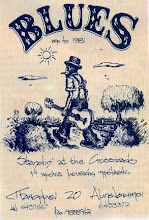

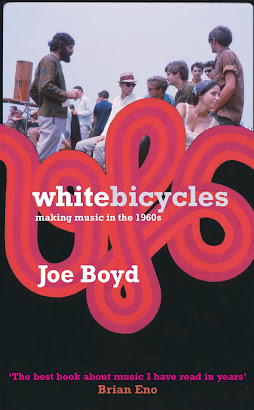
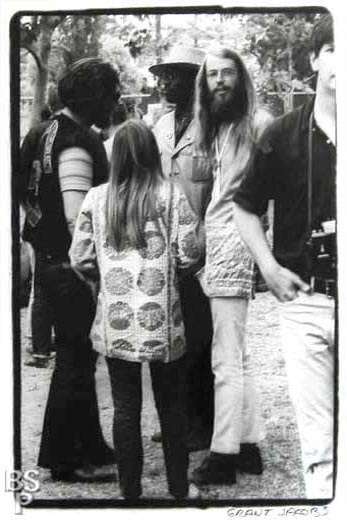
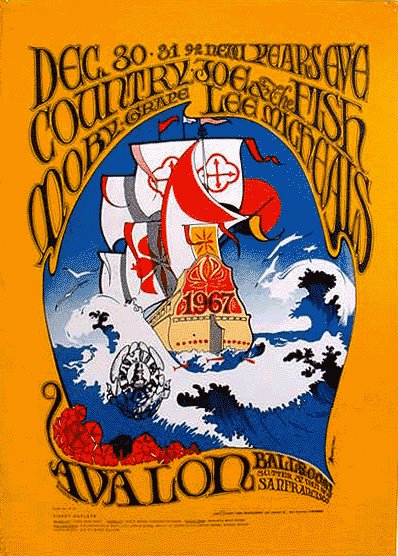
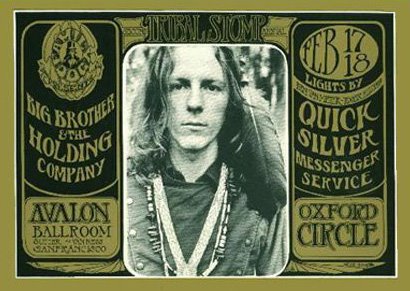
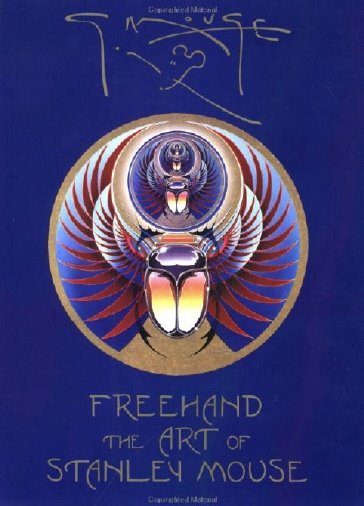.jpg)

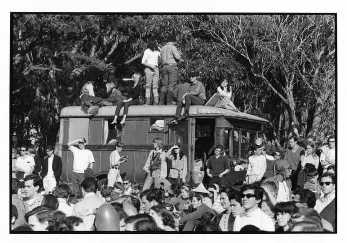




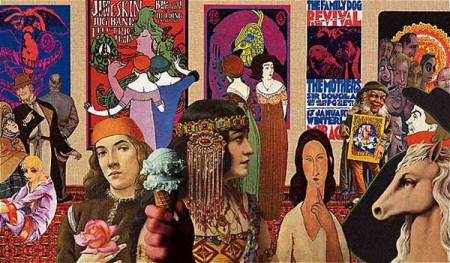.jpg)

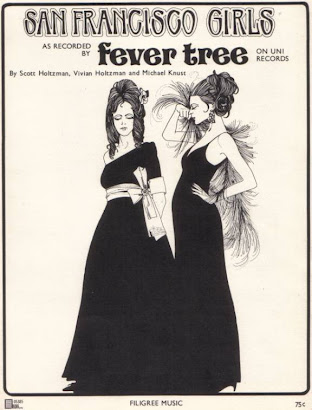
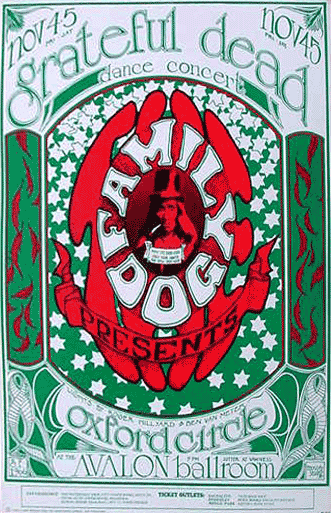
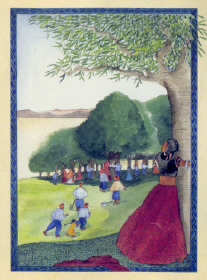
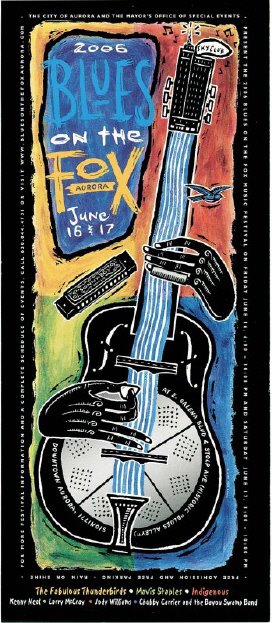




.jpg)






















































































+-+cover.png)














.jpg)




































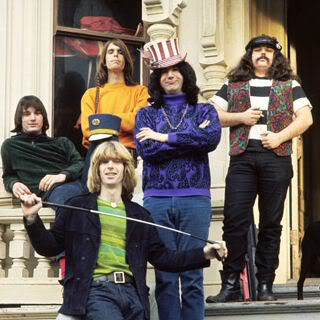






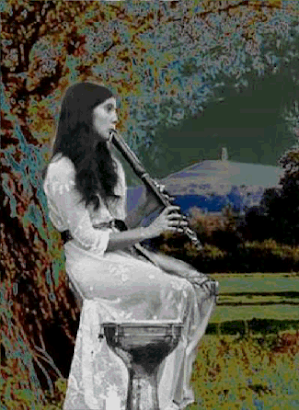


.jpg)









































.jpg)







